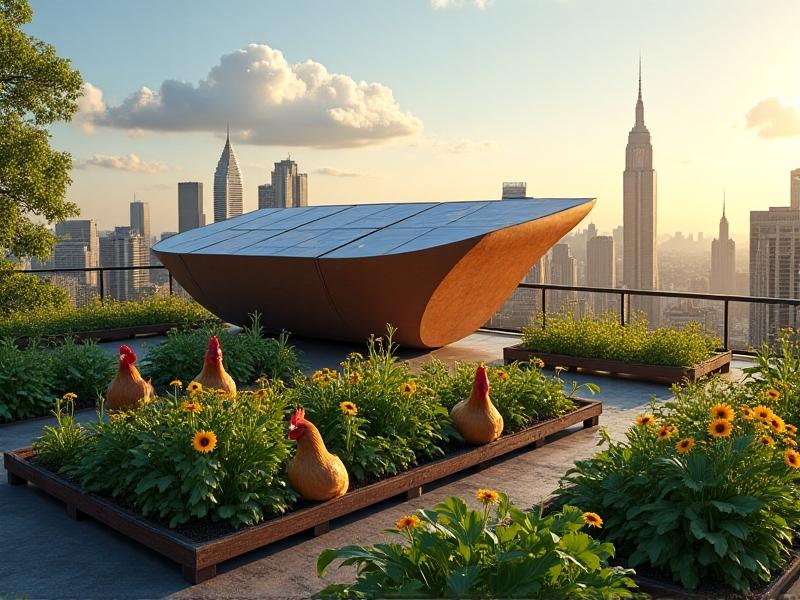Vertical Cooping: Maximizing Limited Urban Space
The Rise of Urban Agriculture and Vertical Cooping
Urban spaces are increasingly embracing innovative solutions to food production, and vertical cooping has emerged as a standout strategy. As cities densify, traditional backyard coops become impractical. Vertical cooping reimagines poultry-keeping by stacking coops vertically, optimizing limited square footage. This approach aligns with the broader urban agriculture movement, which prioritizes local food systems, sustainability, and community resilience. From rooftops to repurposed shipping containers, urban dwellers are discovering that chickens can thrive in compact, multi-level habitats—transforming underutilized spaces into productive hubs.

What Is Vertical Cooping? Redefining Poultry-Keeping in Cities
Vertical cooping involves designing coops that ascend rather than spread out, using vertical space for roosting, nesting, and foraging. Unlike traditional setups, these structures incorporate ramps, staggered levels, and hanging feeders to maximize airflow and accessibility. This method isn’t just about stacking chickens—it’s a holistic system that considers bird welfare, waste management, and ease of maintenance. By integrating greenery like vertical gardens or hydroponics, these coops often double as green infrastructure, contributing to urban biodiversity and cooling effects.

Key Benefits: From Space Efficiency to Sustainability
Vertical cooping addresses urban constraints while delivering environmental and social perks. Space efficiency is obvious, but the benefits extend further: reduced feed waste through controlled dispensers, lower carbon footprints due to local egg production, and nutrient-rich compost from managed droppings. These coops also foster community connections—neighbors often collaborate on maintenance or share harvests. Studies show that urban poultry-keeping can reduce stress and educate residents about food origins, bridging the gap between consumers and their meals.

Designing for Success: Architectural Considerations
Effective vertical coops balance form and function. Architects prioritize natural light and ventilation, using slatted walls or mesh panels to prevent moisture buildup. Each tier must allow easy human access for cleaning, while ramps ensure chickens navigate levels safely. Durable, lightweight materials like cedar or galvanized steel are favored for longevity. Some designs incorporate rainwater collection or solar panels, merging sustainability with practicality. The goal is a structure that’s as aesthetically pleasing as it is efficient—blending into urban environments without compromising animal welfare.

Material Choices and Environmental Impact
Selecting eco-friendly materials is crucial. Recycled plastics, reclaimed timber, and non-toxic paints reduce environmental harm. Insulation materials like hemp or cork regulate temperature, minimizing energy use. Forward-thinking designs even integrate mycelium-based composites for biodegradable structures. These choices not only lower the coop’s carbon footprint but also align with circular economy principles—where every component can be repurposed or composted at its lifecycle’s end.
Case Study 1: Rooftop Coops in New York City
Brooklyn’s rooftop coops exemplify urban ingenuity. One project in Williamsburg houses 20 hens across three stories, producing 200 eggs monthly for a local café. The coop uses repurposed pallets and a drip-irrigation system that waters adjacent herb gardens. Challenges like wind exposure were mitigated with weighted bases and windbreak netting. The initiative has inspired a citywide network of rooftop poultry enthusiasts, proving that even in skyscraper shadows, agriculture thrives.
Case Study 2: Vertical Farms in Tokyo’s Residential Areas
In Tokyo, space constraints led to the development of “pocket coops”—vertical structures integrated into residential balconies. One standout design uses stackable PVC tubes for nesting, paired with compact composting systems. These coops house bantam chickens, smaller breeds suited to tight spaces. Residents report a 30% reduction in household food waste, thanks to feeding scraps to chickens. The model has gained traction, with municipal grants now supporting urban poultry projects.
Navigating Legal and Zoning Challenges
Urban poultry-keeping often clashes with zoning laws designed for rural areas. Advocates in cities like Los Angeles and Toronto have successfully lobbied for revised ordinances, allowing hens (but not roosters) in residential zones. Key arguments focus on waste management plans and noise mitigation. Resources like online permit portals and community workshops demystify regulations, empowering residents to navigate bureaucracy confidently.
Community Engagement and Educational Opportunities
Vertical coops serve as living classrooms. Schools in Portland incorporate coops into STEM curricula, teaching kids about biology and sustainability. Community co-ops offer workshops on chicken care and composting, fostering intergenerational knowledge exchange. These initiatives not only sustain urban flocks but also cultivate environmental stewardship, turning novices into advocates for localized food systems.
The Future of Vertical Cooping: Technology and Trends
Emerging tech is set to revolutionize vertical cooping. IoT sensors can monitor coop conditions in real-time, alerting owners via app about temperature or feed levels. Automated egg collection belts and AI-driven health diagnostics are in prototype phases. Meanwhile, architects are exploring co-living designs where residential buildings integrate coops into shared terraces. As urbanization intensifies, vertical cooping will likely become a staple of resilient cities—merging tradition with innovation to feed communities sustainably.







